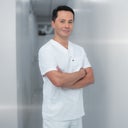There are a couple of reasons why some people have bulging on their upper abdomen after this procedure. The most common reason is individuals who have excess visceral or intra-abdominal fat. individuals who have excess visceral fat will have a bulging abdomen, and this should be established during a consultation because it leaves predictably limited results unless the patient loses weight before the procedure.



